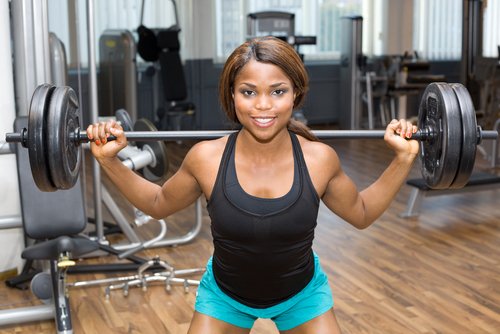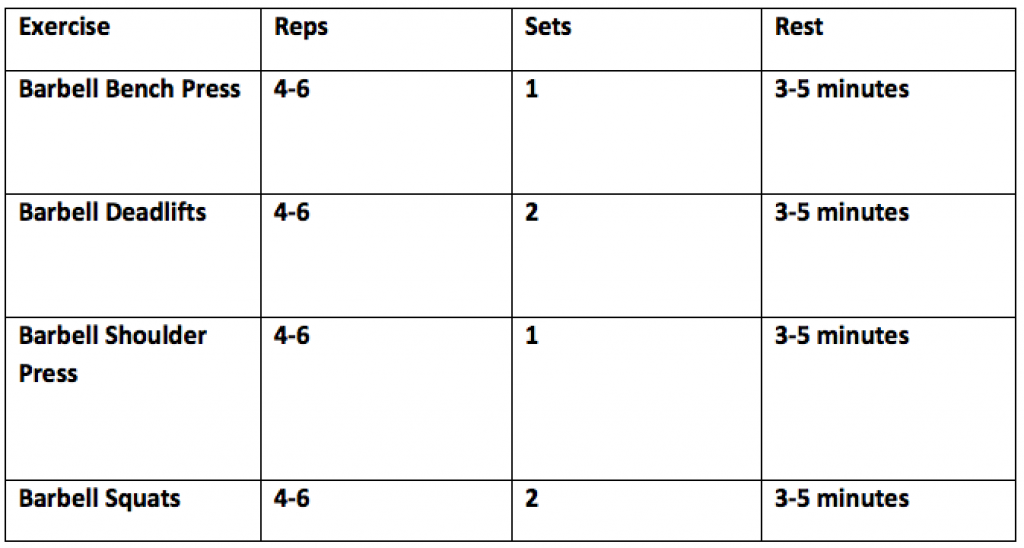Why Strength Training Is Important For Fitness And Weight Loss
By Radiant HealthPublished: September 22, 2015

Many women go the gym and use the cardio equipment, participate in the exercise classes but often eliminate strength training from their workouts. Strength training has some amazing benefits such as burning fat, improving your muscular tone and dramatically boosting your functional strength.
Nevertheless before we discuss strength training in its entirety and it is probably best that we ‘debunk’ a couple of myths which have derived from the training community. Many women think that lifting weights will bulk you up. Lifting weights in the right manner will not cause you to bulk up! The reality is that for muscle to bulk up or grow is harder than you think and takes a huge amount of dedication and commitment!
Fear not ladies you will not become a female version of Arnold Schwarzenegger; as female bodybuilders follow a specific nutrition, supplement and training plan to build muscle mass. When strength training your physique will become more toned; shaped and you will add some muscle mass. However the main objective of strength training is to build lean muscle mass without adding bulk and this can be achieved by performing certain compound moves.
What are compound moves?
Compound exercises are movements which are multi-jointed in nature and they use several muscle groups to help to move your limbs. The main benefits of compound moves are they improve joint stability, overall balance, co-ordination, reaction time along with improving your strength and muscle tone. Many fitness professional refer to these compound exercises as functional exercises because they closely resemble the movements that we use when performing daily tasks e.g. squatting = picking and lifting objects off the ground.
Burn fat
The compound exercises will increase the energy expended during the work outs and up to 24 hours post exercise. This is called the ‘after burn’ effect and it has a close relationship with compound exercises because of the increased muscle fibre recruitment and energy needed to power the muscle tissue. The ‘after burn effect’ is a very important fat burner and it helps you to get leaner a lot quicker because of the overall increase in energy expenditure. It also boosts your metabolism when resting and this is important when trying to strip the body fat off. Importantly, muscle tissue is more metabolically active than fat and burns 15 times more calories when at rest.
Four compound moves to try
During strength training you should be performing heavier lifts with far less repetitions per set. Try to lift as heavy as possible as you will only be performing a maximum of 4-6 lifts per set. Use squats, deadlifts, chest presses and shoulder presses to increase your strength. Don’t be afraid of using a barbell as this is the best piece of equipment to build up your strength.
These main lifts during strength training are neurologically more taxing on the body and this is the main rationale behind in an increase in the rest intervals needed between sets. It is recommended to have between 3-5 minutes rest in between sets, as this strategy gives your body enough time to recover properly-ready for the next heavy lift.
The correct ‘form’ when executing the ‘big 4’will ensure that your strength gains are safe because this approach will reduce the wear and tear on your body. Therefore the mechanics of each of the main lifts will be broken down in detail and feel free to print off this article and use it a quality reference point when at the gym
A basic strength training program for women
Barbell Bench Press
Starting Position
- Lie flat on the bench, feet flat firmly on the floor and toes pointing straight ahead
- Your knees should be about 80 degrees and never under the bench
- Place your palms at the back of the bar with a medium grip
- Then without releasing the grip, rotate bar so that palms are directly under the bar
- This helps to lock down the shoulders, then lift torso and slightly pull your shoulder blades together under your torso
- Engage your core muscles
Lowering Position
- Inhale a large breath
- Slowly lower bar towards the chest by flexing the elbows
- Avoid letting the back arch and ensure that the back of head in contact with bench at all times
- Only lower the bar to the chest and/or as far you can so that it is still under control
Finishing Position
- Exhale your breath
- Press the bar back up, extending arms and contracting chest until arms fully extended
- Keep the feet on floor as they act as stabilisers
- The bar should follow a slight arc as you push it back up moving from lower sternum to over your face
Barbell Deadlifts
Starting Position
- Your feet should be narrow width hip apart with toes facing forwards
- Your shin should be close to the bar
- Hold your breath, engage your core and ensure a midsection tightness
- Maintain a neural spine which is not excessively arched or rounded
- Hinge at your hips and not at your knees or lower back
- Grip the barbell with an overhand grip with hands directly under your shoulders
- Pull your shoulder blades together whilst taking the slack out of the bar
Next Phase
- Keep close to the bar and tight throughout whole deadlift motion
- Pull the bar into your body and not upwards
- Visualise driving your feet through the floor
- Once bar leaves the ground, press your feet into ground and move chest upwards
- Keep you back tight, always lead with back and drive hips towards the bar
- Lock out by extending knees and hips fully
- Your shoulders should be tight
- Squeeze your glutes together at the top of the deadlift
Finish
- Lower barbell to floor by hinging hips, then bring the hips back and stop at the knees controlling the bar back down to the starting position.
Barbell Shoulder Press
Starting Position
- Sit on bench with a straight back support (on the bench) and place in the squat rack
- Place the barbell on rack just above head height
- Grab the bar with palms facing forwards and shoulder width apart
- Lift the bar overhead by extending your arms fully
- Hold the bar about shoulder level and slighting in front of your head
Next Phase
- Lower the bar downwards to shoulders and breath in
- Try not to over flex your elbows and keep the bar under control
Finish Position
- Raise the bar upwards to the starting position and breath out
- Try not to over extend your elbows and keep the bar under control
Barbell Squats
Starting Position
- This exercise is best performed inside a squat rack
- Place the bar at shoulder height and once loaded step under the bar
- Place your hands on the barbell, a little wider than shoulder width apart
- Step under the barbell and place it behind your head and across the back of your shoulders
- Your legs should be shoulder width apart with toes pointing forwards
- Lift bar by pushing with your legs and straighten your trunk
- Step away from rack and keep your head up
- Maintain a straight back throughout
Finishing Position
- Lower the bar by bending your knees and hips
- Stop when the angle between your calves and upper legs is around 90 degrees
- Your knees should never go past your toes
- Raise the bar by pushing your body weight through your heels as you straighten your legs
- Breath out on the way up
Like what you're reading? Sign up for our free newsletter and never miss a post! Plus get a FREE digital version of our Issue No.10 with sign up.

- Some Americans Will Have Medical Debt Wiped From Credit - July 9, 2022
- Natural Gas Used to Heat Homes Contains Some Harmful Chemicals - July 9, 2022
- Uterine Cancer Claims Many Black Lives - July 9, 2022
- Babies and Toddlers Get COVID-19 Shots - June 27, 2022
- FDA Bans Juul’s E-Cigarettes and Cartridges - June 27, 2022
- Polio Virus Found in London Sewage - June 27, 2022
- 200 Million Americans Are Drinking Contaminated Water - June 19, 2022
- Young Kids Can Finally Get Vaccinated Against COVID-19 - June 19, 2022
- New Regulations for Baby Sleep Products - June 19, 2022
- FDA Approves First Drug for Alopecia Hair Loss - June 19, 2022













